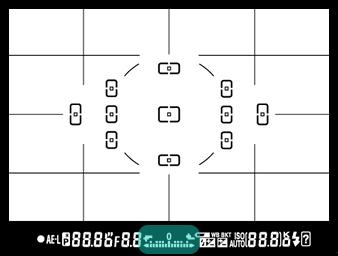|
Metering
Goals
Knowing how metering works and what each of the metering modes does will help you control the exposure in your photographs and take better pictures in unusual lighting situations. In this chapter, we will explain what metering is, how it works and how you can use it for your digital photography.
Content in a nutshell
Metering is used to regulate exposure in photographs according to the brightness of the scene using an inbuilt light sensor. There are three common metering modes:
- Matrix metering ensures a balance between light and dark areas.
- Center-weighted metering ensures that exposure is set correctly for the center of the frame.
- Spot metering ensures that exposure is set correctly at the selected focus point.
What is Metering?
Metering is used to measure the brightness of the subject. The camera optimizes exposure by adjusting the shutter speed, aperture (f-number), and ISO sensitivity according to the brightness of the subject, which is measured using the camera's built-in light sensor.
The camera does not simply measure the overall brightness of the frame but measures the brightness separately in multiple areas of the frame. The metering mode determines which areas of the frame are used by the camera to measure subject brightness and how the camera sets exposure. There are three most common metering modes found in most cameras today:
- Matrix (Nikon) or Evaluative (Canon) metering
- Center-Weighted Metering
- Spot metering
In the image below you can see the camera meter highlighted in the viewfinder. If you shoot in manual mode, you will see the middle bar of the meter move depending on the light levels in your scene. If your scene is too bright or too dark, the meter will be off-center. In this case, you would need to adjust your shutter speed or aperture to get to '0', which would mean optimal exposure for the photo.

[Photo courtesy of imaging.nikon.com]
You can use the meter if you are shooting in other modes besides manual; for example, in aperture or shutter priority, the camera would adjust the settings based on what it reads from the meter.
Potential Problems With Metering
By default, your camera is most likely set to matrix metering, which would work great in most situations when the scene is lit evenly. The camera meter would look at the light levels in the entire frame and come up with an exposure that balances both bright and dark areas in the image.
However, if there are objects in the scene with different light intensities, it might become difficult for the camera to set the correct exposure. A common example would be if you are taking a portrait of a person with a source of light behind them, like the sun. Depending on how much of their body is taking up in the frame, the camera will try to set the exposure either to the bright background, which would underexpose the subject, or the person, leaving the background bright and overexposed. This is why we will cover the three metering types and in which situations to use them.
Matrix/Evaluative Metering

[Original photo courtesy of Tina Cerpnjak]
Matrix metering or Evaluative metering mode is the default metering mode on most DSLR cameras. It works by dividing the entire frame into multiple zones, which are all assessed in exposure individually. After gathering the information from all individual zones, the metering system looks at where you focused within the frame and marks it as a higher priority area.
There are many other variables used in the equation, which differ from manufacturer to manufacturer. This mode is well suited for most of your photography needs, including landscape and portrait photography.
Center-Weighted Metering

[Original photo courtesy of Tina Cerpnjak]
Using the whole frame for determining the correct exposure is not always desirable. Center-weighted metering evaluates the light in the middle of the frame and its surroundings and ignores the edges.
Compared to matrix metering, center-weighted metering does take into account the focus point you select and only evaluates the middle area of the image. Use this mode when you want the camera to prioritize the middle of the frame, which works great for close-up portraits and relatively large subjects that are in the middle of the frame
Spot Metering

[Original photo courtesy of Tina Cerpnjak]
Spot metering only evaluates the light around your focus point and ignores everything else. It evaluates a single zone/cell and calculates exposure based on that single area.
Let's say you were taking a picture of a person with the sun behind but they occupied a small part of the frame. In this case, it would be best to use the spot metering mode instead of center-weighted. When your subjects do not take much of the space, using the matrix or center-weighted metering modes would most likely result in a silhouette, if the subject was back-lit. Spot metering works great for back-lit subjects like that.
Some DSLRs are even capable of multi-spot metering, which basically allows choosing multiple spots to measure light and come up with an average value for a good exposure.
How to Set Metering on Your Camera
Unfortunately, this varies not only from manufacturer to manufacturer but also from model to model. The best way is to get acquainted with the camera's manual and figure out the basic commands before you start taking pictures in any case.

